![]()
![]()
![]()
Use LEFT and RIGHT arrow keys to navigate between flashcards;
Use UP and DOWN arrow keys to flip the card;
H to show hint;
A reads text to speech;
9 Cards in this Set
- Front
- Back
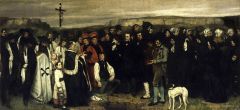
|
Gustave Courbet, A Burial at Ornans 1849-1850 Realism
Not polemical, this painting depicts an middle class burial in Courbet's homeland. There is no emotion to this depiction of death, or spirituality, it is realism, and death just "is." Courbet emphasizes the democratic composition, which went against the compositional rules of the academy- he was a democratic kind of guy. |
|
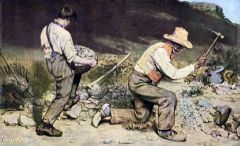
|
Gustave Courbet, The Stonebreakers 1849-50 Realism
An enormous painting of peasant stonebreakers, who are as mundane as figures get. It's not a fun pastoral, it's a realistic one, the old figure is worn and the boy will one day be like him. Neither of them look at the viewer, which is strange and modern, like Watteau. The crushing cycle of poverty.
|
|
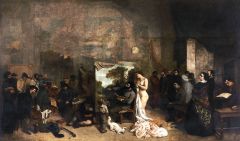
|
Gustave Courbet, The Painter's Atelier (A real allegory of seven years of my artistic life.) 1854-55
This painting is notable mostly for its dynamism. There is an active, experimental paint surface, which emphasizes the reality of the painting as an object, a two-dimensional projection. Left are humans from all levels of society, right are his peers and associates, in the middle he turns away from the academic nude figure to paint a landscape. |
|
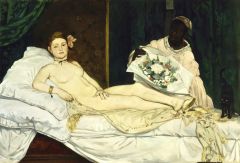
|
Edouard Manet, Olympia 1863 Realism
Olympia is representative of Manet's tendency to undermine old traditions from within by participation. Venus isn't just naked, she's "NEKKID," she has a confrontational gaze which makes her seem naughtier. She caused a stir because she isn't a goddess, she's clearly a prostitute who is challenging the viewer, gazing right back. |
|
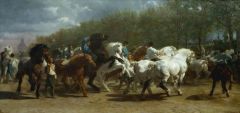
|
Rosa Bonheur, The Horse Fair 1853 Realism
Rosa Bonheur was a very famous animal painter of her time and a favorite in England. Her chosen subject of horses reflects the limitations placed on woman artists of the time- they were not permitted to sketch nudes, and were relegated to "lower genres." Rosa would dress in men's clothing to blend in at these events and also for ease of movement. |
|
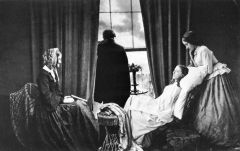
|
Henry Peach Robinson, Fading Away 1858 Victorian Photography
This work was both modern and fashionably morbid. The blending of artifice and reality (staged-ness) was disliked by some but Prince Albert loved it. It's an early example of photoshopping, and is comprised of five separate negatives. |
|
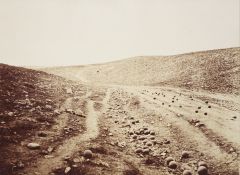
|
Roger Fenton, Valley of the Shadow of Death 1855 Photography/Photojournalism
Fenton was sent as a war photographer during the Crimean War, which was the world's first "armchair war," where people at home could see and comment on the action from afar. The landscape looks desolate, the cannonballs a reminder of ephemeral activity, a violent human struggle which has come and gone, while the earth is permanent. |
|
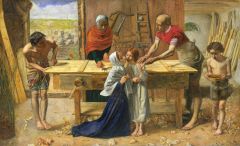
|
John Everett Millais, Christ in the Carpenter's Shop 1849-1850 Pre-Raphaelitism
Part of the Pre-Raphaelite movement, which sought to return art to the time before the renaissance and eke out a new, better path, rife with meaning and spiritualism. This painting caused a stir because it represented Christ in an unidealized form, as a regular child, the son of a common carpenter. It is full of iconography that requires knowledge of the story of Christ's life. |
|
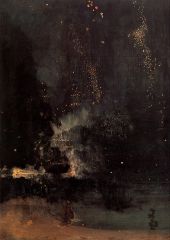
|
Whistler, Nocturne in Black and Gold: The Falling Rocket 1875 Tonalism/Art for Art's Sake
This painting was the cause of a lawsuit brought against Whistler by critic John Ruskin, who thought it was obscene that Whistler would charge for an "unfinished painting." Whistler retaliated by saying he was not charging for 2 days work, but the knowledge of a lifetime. The painting is flat and full of unmodulated color. This work is art for art's sake- there is nothing Whistler has to say, it is complete in itself as a visual object. |

